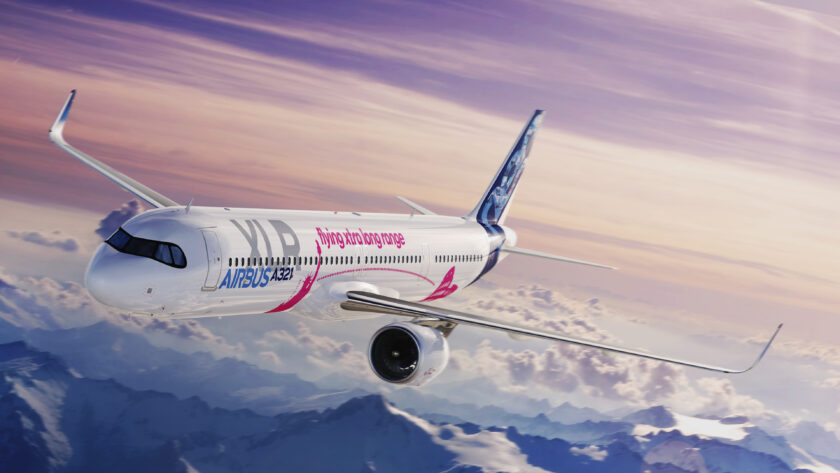
The Revolution in Civil Aviation Is called Airbus “A321XLR”. The revolution in civil aviation is called the “A321XLR,” with the final letters “XLR” standing for “Extra Long Range,” highlighting the operational frontiers reached by the new Airbus A321. These aircraft can cover long-range intercontinental routes thanks to a nearly 35% improvement in range compared to the A321Neo models and an 18% increase over the A321LR models from which they are derived. The A321XLR boasts a range of 4,700 nautical miles, or over 8,700 kilometers, enabling nonstop connections on intercontinental routes previously reserved for larger, twin-aisle aircraft.
Reengineered with this objective in mind, the aircraft is poised to become a true “game changer” in long-haul aviation. It opens the door to more widespread connections and supports routes with lower passenger demand, thanks to seating capacities ranging from 180 to 220. Unsurprisingly, Airbus has already received orders for 496 aircraft. The A321XLR promises 45% lower operating costs than twin-aisle planes used for long-haul routes and 30% lower fuel consumption per passenger.

This achievement is made possible by innovations that include carrying up to 16,000 liters more fuel than the A321LR models, raising the maximum takeoff weight to 101 metric tons compared to the LR’s 93 metric tons. While the external dimensions remain the same as the A321Neo, with a length just over 44.5 meters and a wingspan nearing 36 meters, numerous changes have been made to the aircraft’s components to achieve these new capabilities.

First and foremost, a new central fuel tank with nearly 13,000 liters of capacity has been added to the rear of the aircraft, with the option to install another tank in front of the wings. These upgrades increase the total fuel capacity to over 32,000 liters. The additional fuel weight necessitated entirely new, reinforced landing gear as well as redesigned flaps on the trailing edges of the wings to improve maneuverability despite the aircraft’s increased weight.
To offset this added weight, the cabin’s paneling has been lightened while enhancing its strength and noise insulation to ensure passenger comfort on long journeys. Overhead storage bins have also been expanded to meet the needs of travelers. Derived from the Neo models, the cabin layout in the forward section can be modified to include additional galley or lavatory space as needed for operational purposes.

The A321XLR is equipped with the same turbofan engines used on A320Neo models—Pratt & Whitney’s latest-generation PW1100G-JM engines. These engines deliver maximum thrusts between 110 and 150 kilonewtons, feature fan diameters slightly exceeding two meters, and have bypass ratios of 12:1. Their hallmark is a 15% reduction in fuel consumption compared to previous engine generations, accompanied by noise emissions that are 75% lower.
Title: Airbus “A321 Xlr”, 11 hours non-stop
Translation with ChatGPT



